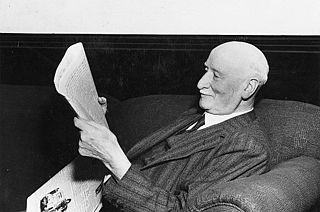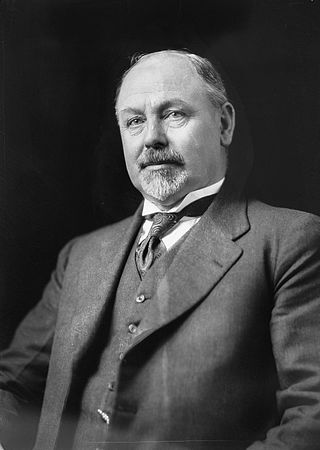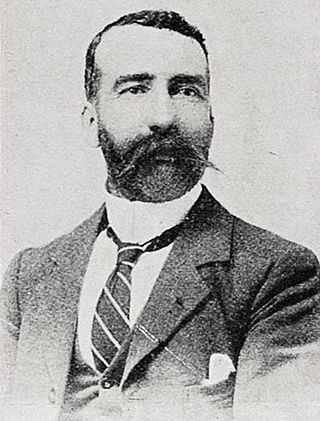| |||||||||||||||||||||
| Turnout | 74.96% | ||||||||||||||||||||
|---|---|---|---|---|---|---|---|---|---|---|---|---|---|---|---|---|---|---|---|---|---|
| |||||||||||||||||||||
| |||||||||||||||||||||
The Taranaki by-election of 1907 was a by-election for the electorate of Taranaki held on 14 May 1907 during the 16th New Zealand Parliament.
| |||||||||||||||||||||
| Turnout | 74.96% | ||||||||||||||||||||
|---|---|---|---|---|---|---|---|---|---|---|---|---|---|---|---|---|---|---|---|---|---|
| |||||||||||||||||||||
| |||||||||||||||||||||
The Taranaki by-election of 1907 was a by-election for the electorate of Taranaki held on 14 May 1907 during the 16th New Zealand Parliament.
The contest was triggered due to the death of incumbent MP Edward Smith. Three candidates stood; Henry Okey was the Conservative candidate, Edward Dockrill was the Liberal government endorsed candidate and William Malone an Independent Liberal [1] Okey was the victor, resulting in the defeat of the Liberal Government's preferred candidate because of William Malone, a popular local "Independent Liberal" candidate splitting the government support vote. Because of the vote-splitting, the defeat of the Government candidate did not necessarily mean support for Opposition objection to the Land Bill then before Parliament.
The following table gives the election results:
| Party | Candidate | Votes | % | ±% | |
|---|---|---|---|---|---|
| Conservative | Henry Okey | 1,991 | 43.02 | ||
| Liberal | Edward Dockrill [3] | 1,627 | 35.16 | ||
| Independent Liberal | William Malone | 1,010 | 21.82 | ||
| Majority | 364 | 7.87 | |||
| Informal votes | 23 | 0.50 | |||
| Turnout | 4,651 | 74.96 | |||
| Registered electors | 6,205 | ||||
Okey held the seat until his own death in 1918 which triggered the 1918 by-election which was won by Edward Smith's son Sydney. [4] Okey was later to join the Reform Party upon its formation in February 1909. Malone was later notable during World War I, when he was killed in action leading his troops during the Gallipoli Campaign.

The 1893 New Zealand general election was held on 28 November and 20 December in the European and Māori electorates, respectively, to elect 74 MPs to the 12th session of the New Zealand Parliament. The election was won by the Liberal Party, and Richard Seddon became Prime Minister.

The 1896 New Zealand general election was held on Wednesday, 4 December in the general electorates, and on Thursday, 19 December in the Māori electorates to elect a total of 74 MPs to the 13th session of the New Zealand Parliament. A total number of 337,024 (76.1%) voters turned out to vote.

The 19th New Zealand Parliament was a term of the New Zealand Parliament. It opened on 24 June 1915, following the 1914 election. It was dissolved on 27 November 1919 in preparation for 1919 election.

Nelson is a New Zealand parliamentary electorate, returning one Member of Parliament to the House of Representatives of New Zealand. From 1853 to 1860, the electorate was called Town of Nelson. From 1860 to 1881, it was City of Nelson. The electorate is the only one that has continuously existed since the 1st Parliament in 1853.

New Plymouth is a New Zealand parliamentary electorate. It was first created for the 1st New Zealand Parliament in 1853 and has existed since, with one 32-year interruption. The electorate was initially called Town of New Plymouth.

Wairarapa is a New Zealand parliamentary electorate. It was first created in 1858 and existed until 1881. It was recreated in 1887 and has since existed continuously. The current Wairarapa electorate MP is Mike Butterick.

Sydney George Smith was a New Zealand politician of the Liberal Party and then the National Party, and a cabinet minister.
Waimarino was a New Zealand parliamentary electorate that existed from 1911 to 1954, and from 1963 to 1972. It was rural in nature and was represented by four Members of Parliament.
Taranaki was a New Zealand parliamentary electorate that existed for three periods between 1881 and 1996. It was represented by nine Members of Parliament.
Avon is a former New Zealand parliamentary electorate. It was created for the 1861 general election and existed until 1996. It was represented by 13 Members of Parliament and was held by Independents, Liberal Party or Labour Party representatives.
Western Maori was one of New Zealand's four original parliamentary Māori electorates established in 1868, along with Northern Maori, Eastern Maori and Southern Maori. In 1996, with the introduction of MMP, the Maori electorates were updated, and Western Maori was replaced with the Te Tai Hauāuru and Te Puku O Te Whenua electorates.
Stratford is a former parliamentary electorate, in Taranaki, New Zealand. It existed from 1908 to 1946, and from 1954 to 1978. It was represented by six Members of Parliament.

Albert Edward Jull was a New Zealand politician of the Liberal Party, the United Party and from 1938 the National Party.
Wairau was a parliamentary electorate in the Marlborough Region of New Zealand. It was one of the initial 24 New Zealand electorates and existed from 1853 until its abolition in 1938, when it was succeeded by the Marlborough electorate. The electorate had 13 representatives during its existence. The 1861 election in the Wairau electorate was notable in that a later Premier, Frederick Weld, was unexpectedly and narrowly defeated by William Henry Eyes.
Kaiapoi was a rural New Zealand electorate, north of Christchurch in the Canterbury region of New Zealand from 1861 to 1946. It was represented by twelve Members of Parliament.

Henry James Hobbs Okey was a Reform Party Member of Parliament in New Zealand.

Frank Franklin Hockly was a Reform Party Member of Parliament in New Zealand.

Alfred Levavasour Durell Fraser was a Liberal Party Member of Parliament in New Zealand.
The 3rd New Zealand Parliament was a term of the Parliament of New Zealand. Elections for this term were held between 12 December 1860 and 28 March 1861 in 43 electorates to elect 53 MPs. Two electorates were added to this during this term, Gold Fields District and a new Dunedin electorate created by splitting the existing City of Dunedin into Dunedin and Suburbs North and Dunedin and Suburbs South, increasing the number of MPs to 57. During the term of this Parliament, six Ministries were in power.

Edward Dockrill was a New Zealand politician who served as the 8th Mayor of New Plymouth. He was known as a powerful advocate of public works, supported the protection of "indigenous land rights" and was a critic of pastoralism. He was also known to be an abolitionist.